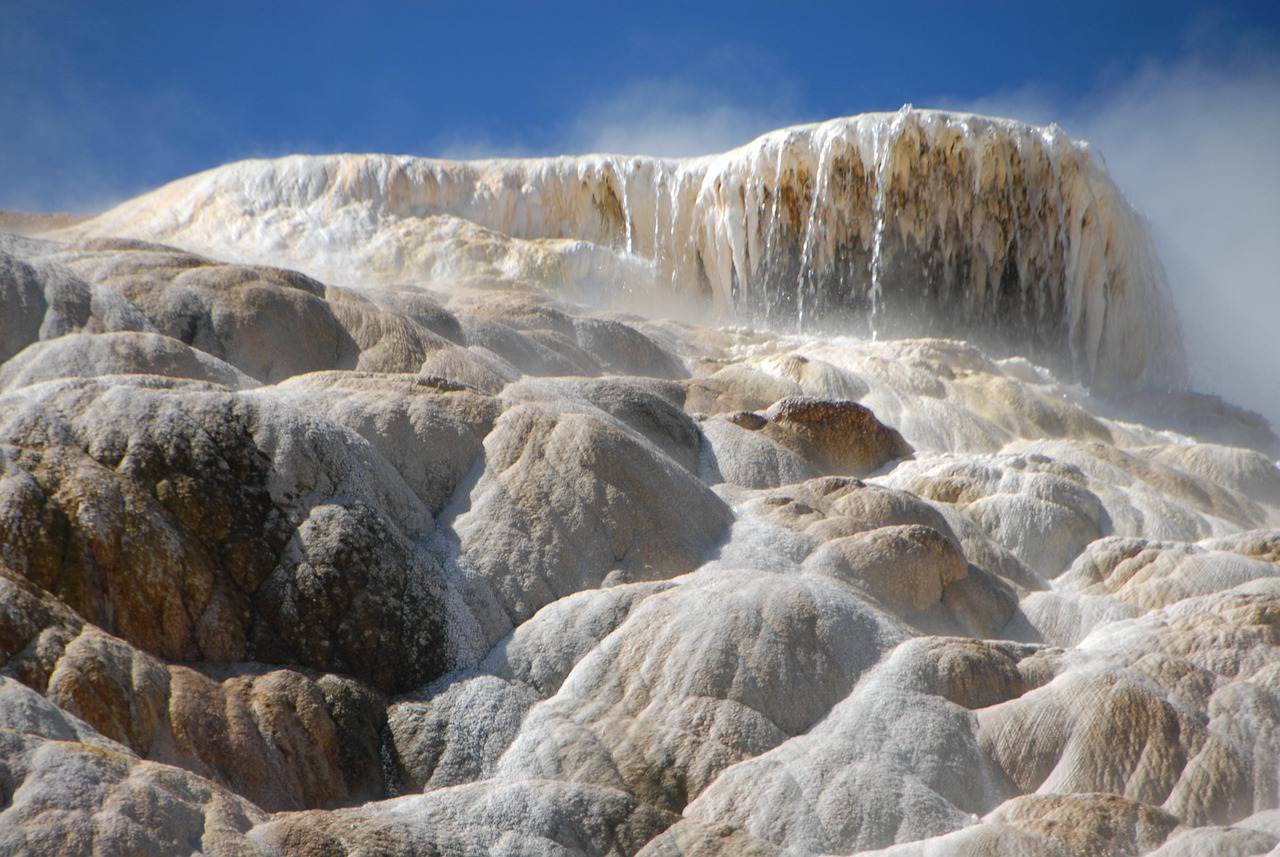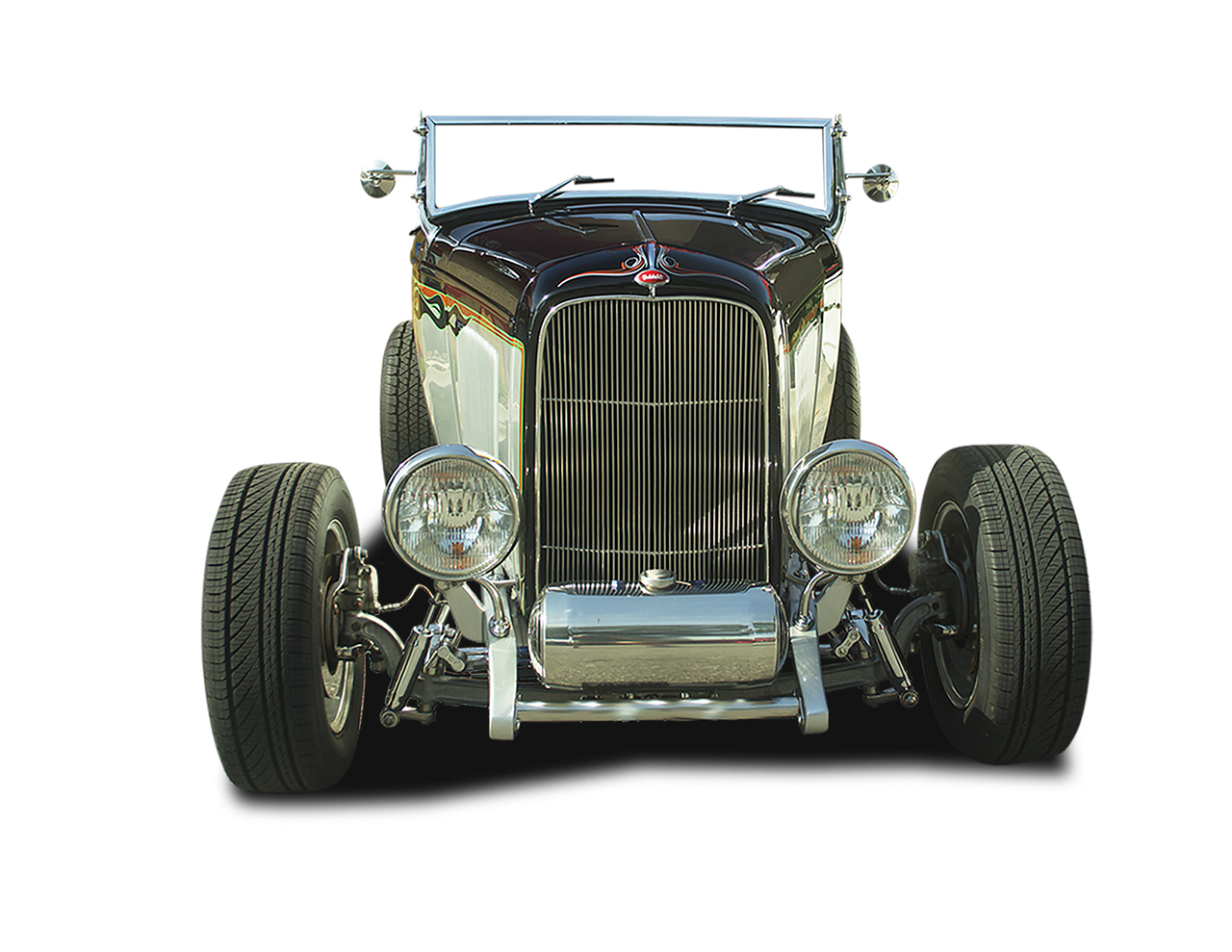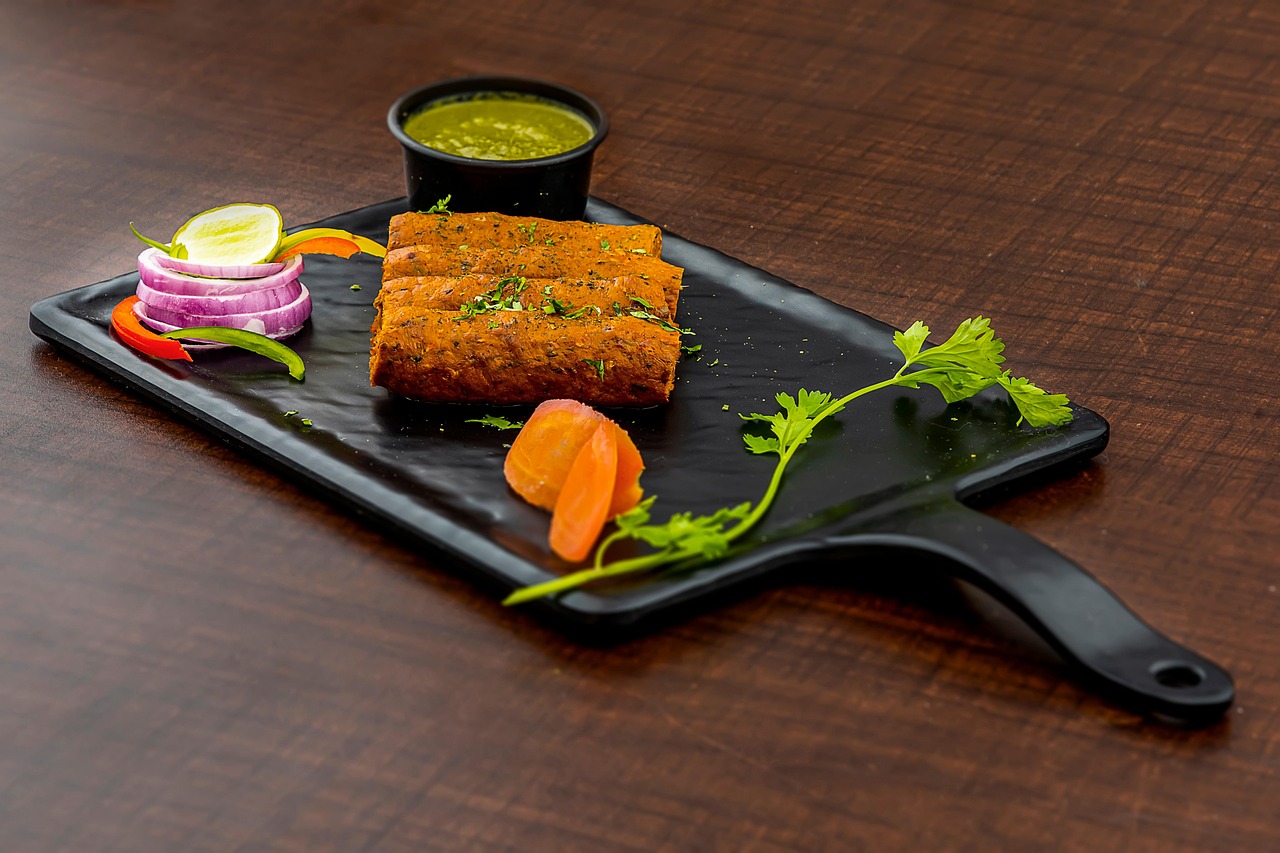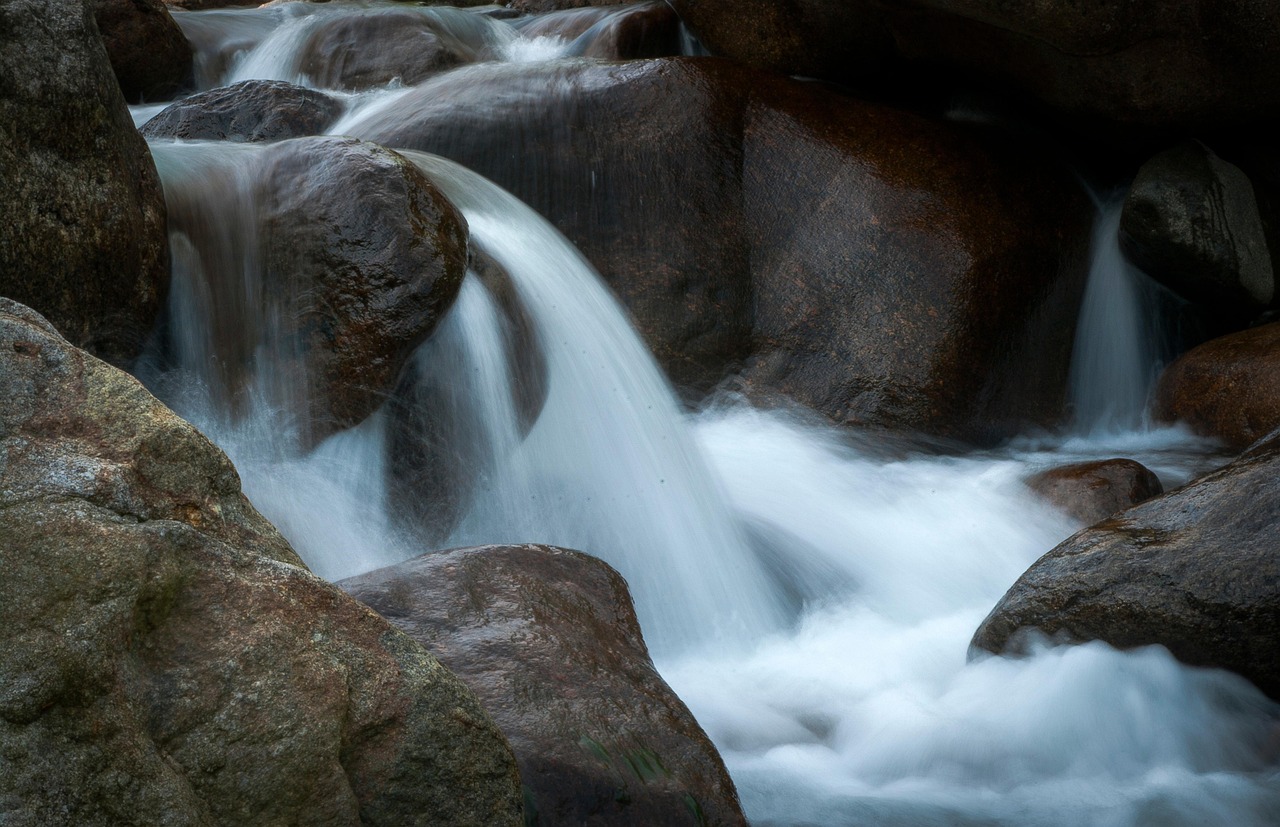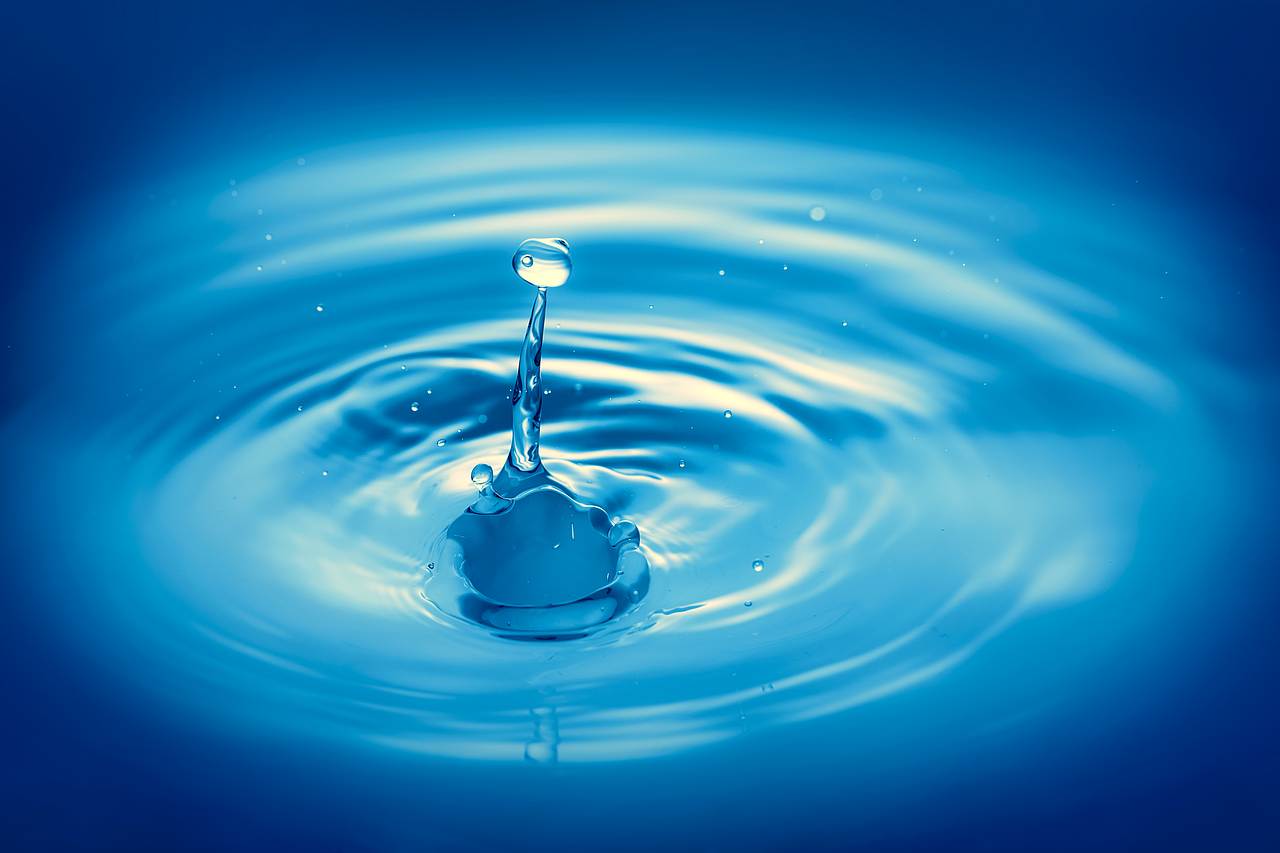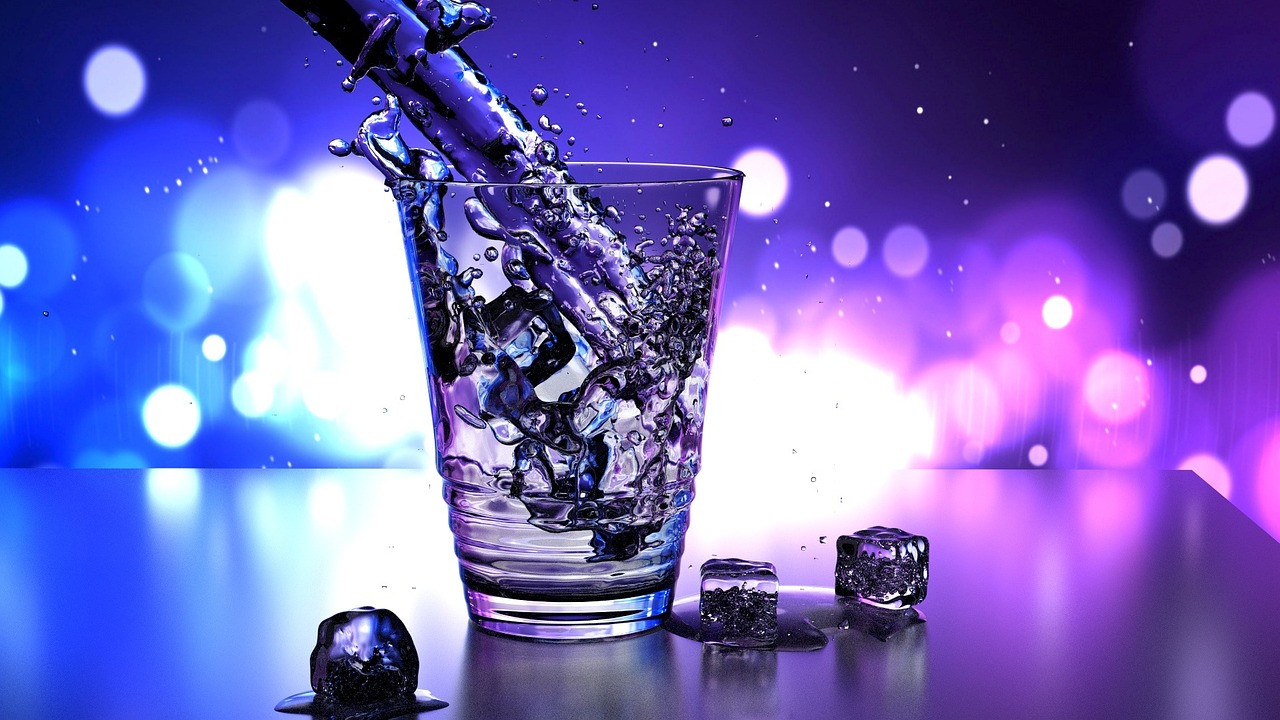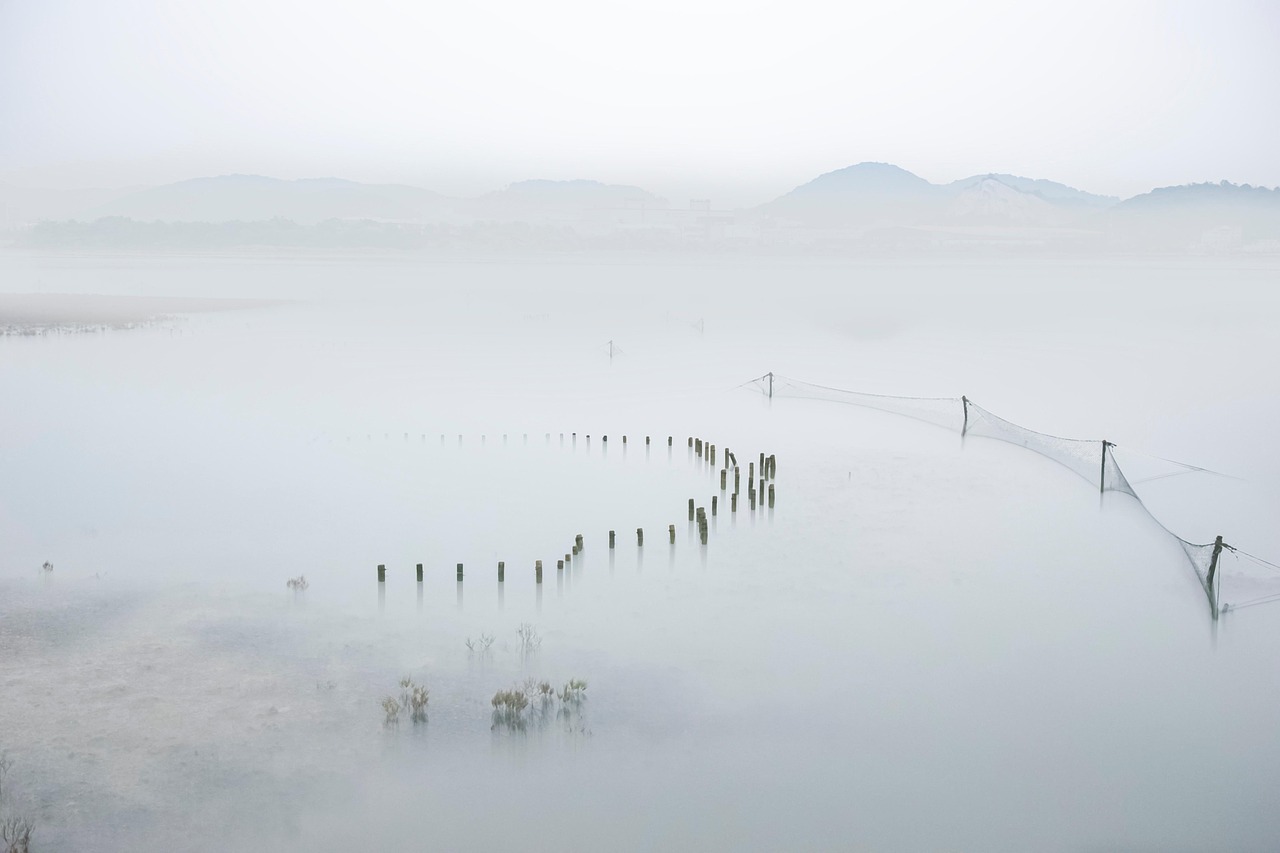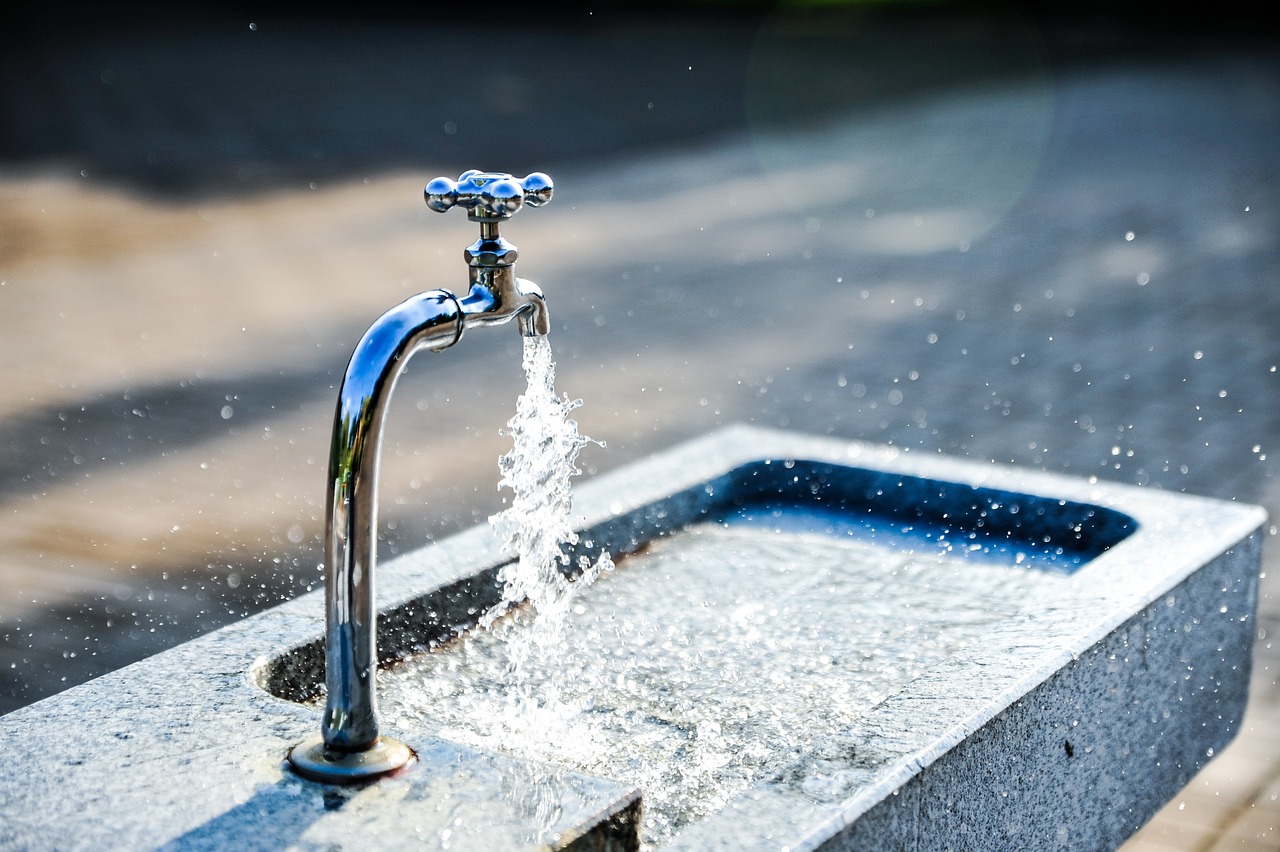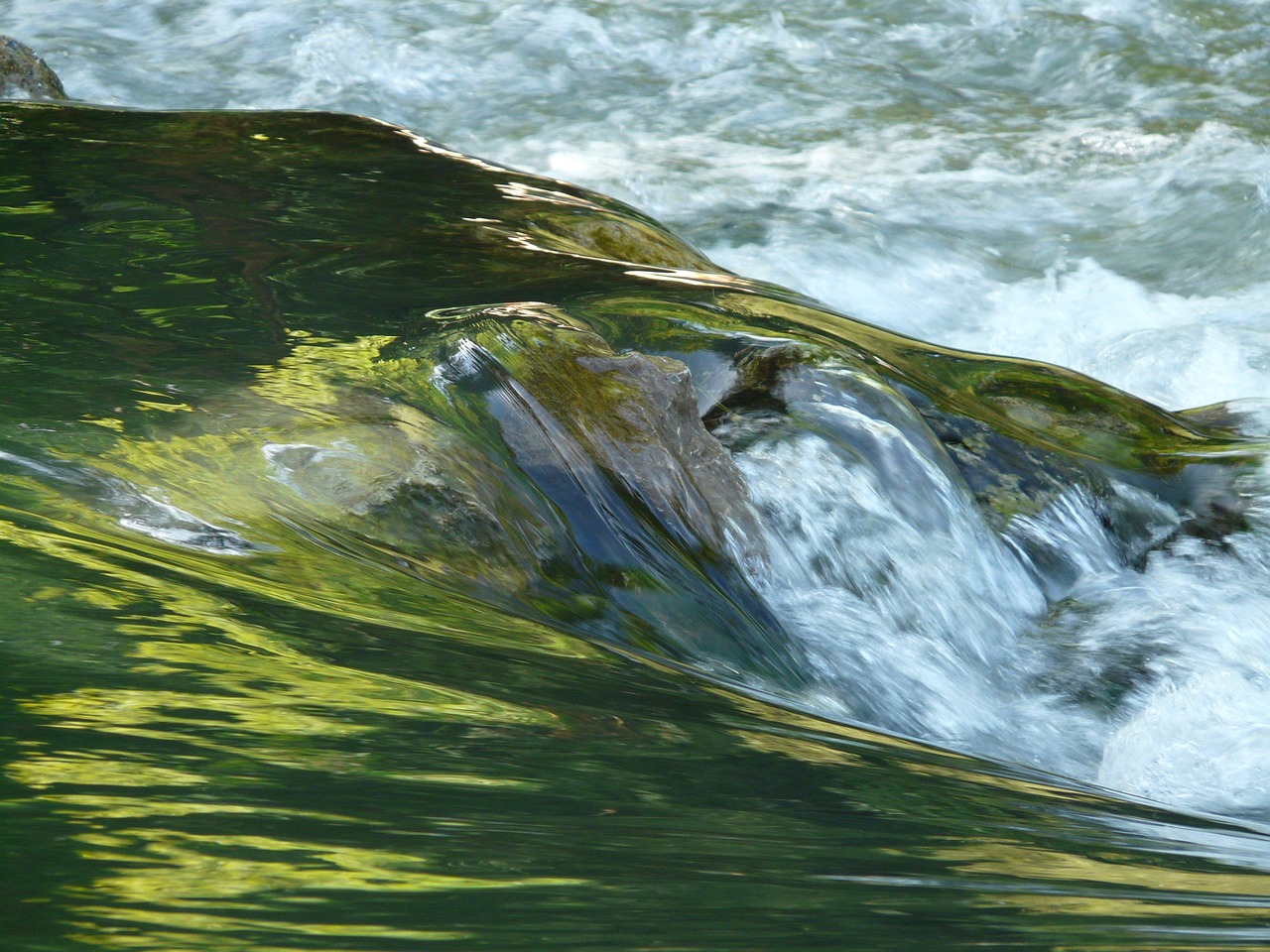This article delves into the scientific principles behind boiling water, comparing the effects of hot and cold water on boiling speed. We will examine how temperature impacts the boiling process, along with practical implications for cooking and energy efficiency.
The Science Behind Boiling Water
To understand the boiling process, it is essential to explore the behavior of water molecules. When heat is applied, the temperature of water increases, causing the molecules to move faster. As they gain energy, they transition from a liquid state to a gaseous state, resulting in boiling.
What is Boiling Point?
The boiling point of water is the temperature at which it changes from liquid to vapor. This temperature is typically 100°C (212°F) at sea level but can be affected by factors such as atmospheric pressure and impurities in the water.
Factors Influencing Boiling Point
- Altitude Effects: At higher altitudes, the atmospheric pressure is lower, which reduces the boiling point of water. This means that cooking techniques need to be adjusted when preparing food in elevated locations.
- Role of Impurities: The presence of solutes like salt or sugar can either raise or lower the boiling point. Understanding these effects can improve boiling efficiency in culinary practices.
Temperature and Boiling Speed
One common question is whether starting with hot water truly makes it boil faster. Research indicates that while hot water may seem to reach boiling quicker, the difference is minimal. The time taken to reach boiling is influenced more by the energy applied than the initial temperature.
Practical Applications in Cooking
When it comes to cooking, the choice between hot and cold water can significantly impact meal preparation. For instance:
- Boiling Pasta: Starting with cold water is often recommended for boiling pasta, as it allows for even cooking and prevents the pasta from becoming too sticky.
- Making Tea and Coffee: The temperature of water is crucial for extracting flavors in beverages. Different types of tea and coffee require specific water temperatures for optimal brewing.
Energy Efficiency Considerations
Using hot water may initially seem more convenient, but it can also lead to increased energy consumption. Understanding the energy implications of boiling water at various temperatures is essential for making informed choices.
Cost Analysis of Heating Water
Heating water incurs costs, and starting with already hot water can sometimes lead to unnecessary energy expenditure. Evaluating these costs can help in selecting the most efficient methods for boiling water.
Environmental Impact
Employing energy-efficient practices in boiling water can significantly minimize environmental impact. By boiling water effectively, we contribute to sustainability efforts, reducing our carbon footprint.
Common Myths about Boiling Water
- Myth: Hot Water Boils Faster: Many believe that starting with hot water guarantees faster boiling. However, scientific evidence suggests that the difference is negligible.
- Myth: Cold Water Takes Longer to Boil: The notion that cold water always takes longer to reach boiling is misleading. The dynamics of boiling are more complex than simply comparing initial temperatures.
In summary, the relationship between water temperature and boiling speed is influenced by various factors, including molecular behavior, impurities, and environmental conditions. Understanding these principles can enhance cooking efficiency and energy conservation.
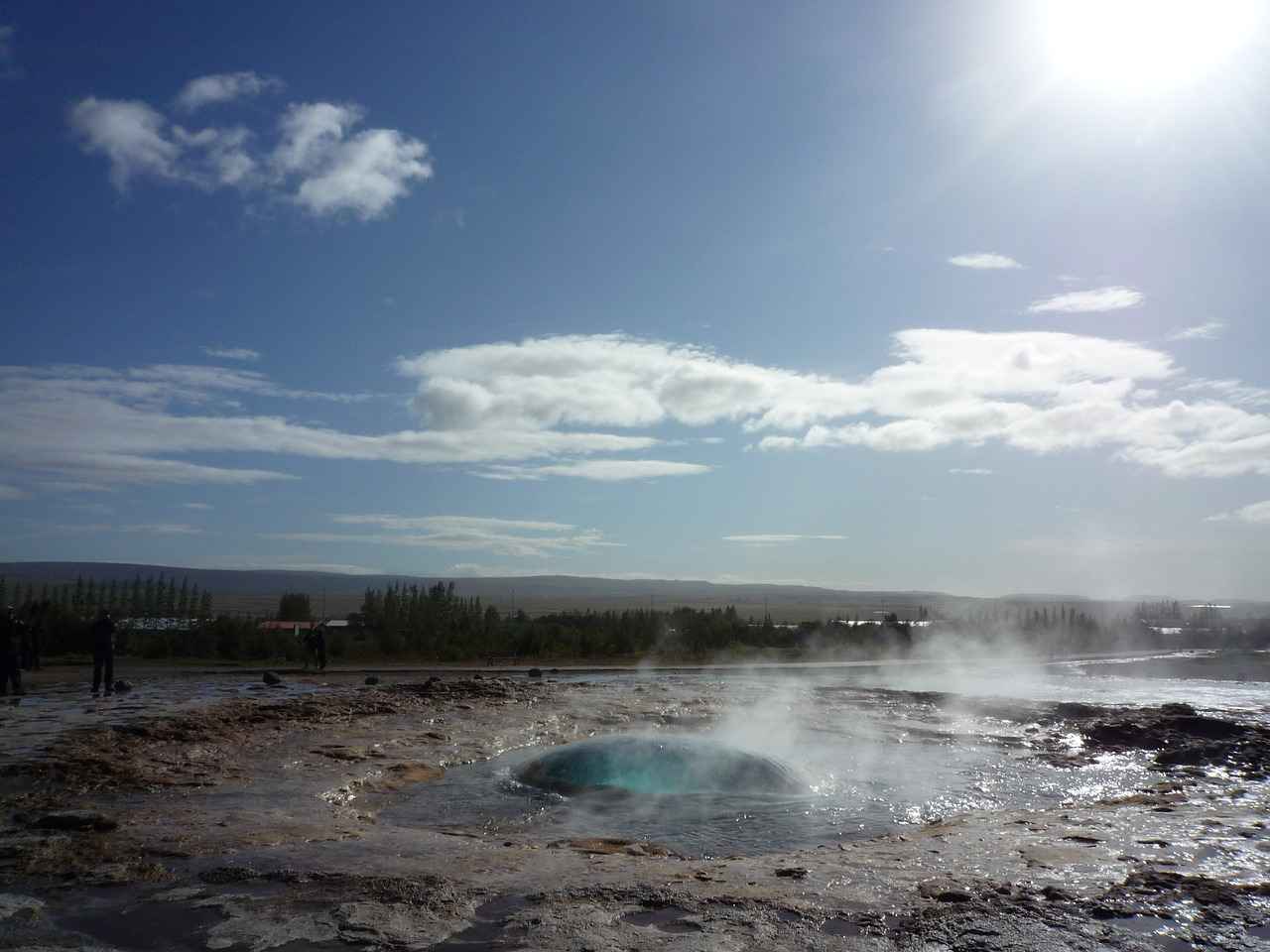
The Science Behind Boiling Water
When we talk about the boiling process, it’s essential to understand the underlying molecular behavior of water. At the core of boiling lies the interaction between heat and water molecules, which ultimately leads to a phase transition from a liquid state to a gaseous state. This section delves into how temperature influences water molecules and their transition from liquid to gas.
The boiling point of water is defined as the temperature at which it changes from a liquid to a vapor. This temperature is not a fixed value; rather, it varies based on several factors, including atmospheric pressure and the presence of impurities. For instance, pure water typically boils at 100 degrees Celsius (212 degrees Fahrenheit) at sea level. However, this boiling point can be altered by the surrounding environment.
| Factor | Effect on Boiling Point |
|---|---|
| Altitude | Higher altitudes decrease boiling point due to lower atmospheric pressure. |
| Impurities | Presence of solutes can elevate or lower the boiling point. |
Understanding how temperature impacts water molecules is crucial. When heat is applied, the kinetic energy of the water molecules increases. As the temperature rises, the molecules move faster and begin to break the hydrogen bonds that hold them together in the liquid state. At the boiling point, these molecules have enough energy to overcome these bonds entirely, allowing them to escape into the air as vapor.
Interestingly, the initial temperature of water can influence how quickly it reaches its boiling point. For example, starting with hot water may seem like it would boil faster than starting with cold water. However, the reality is more complex. The rate at which water boils depends on various factors, including the heat source’s intensity and the container’s material. Therefore, while it might take less time to reach the boiling point with hot water, the difference is often negligible when considering the overall cooking process.
Moreover, the molecular structure of water plays a significant role in its boiling behavior. Water molecules are polar, meaning they have a positive and negative end. This polarity leads to strong hydrogen bonding, which requires a considerable amount of energy to break. Consequently, as the temperature increases, these bonds are progressively weakened until boiling occurs.
In the culinary world, understanding these principles can enhance cooking techniques. For instance, knowing that impurities can alter boiling points allows chefs to make informed decisions when preparing dishes that require precise temperatures. Additionally, recognizing the effects of altitude can help in adjusting cooking times and methods, ensuring consistent results regardless of location.
In conclusion, the science behind boiling water is a fascinating interplay of temperature, molecular behavior, and external factors. By grasping these concepts, one can not only understand the boiling process better but also apply this knowledge practically in cooking and beyond.

What is Boiling Point?
The boiling point is a crucial concept in understanding the behavior of liquids, particularly water. It refers to the temperature at which a liquid transitions into vapor, a process driven by the kinetic energy of its molecules. As the temperature rises, water molecules move faster, eventually reaching a point where they can escape the liquid state and form gas. However, this transition is not solely dependent on temperature; it is significantly influenced by atmospheric pressure and the presence of impurities.
At sea level, the boiling point of water is typically 100 degrees Celsius (212 degrees Fahrenheit). However, this temperature can vary based on the surrounding atmospheric pressure. For instance, at higher altitudes, where atmospheric pressure is lower, water boils at a lower temperature. This phenomenon occurs because the reduced pressure allows water molecules to escape into the vapor phase more easily. Therefore, cooking methods that rely on boiling water, such as boiling pasta or making soups, may require adjustments when performed at high elevations.
In addition to altitude, the boiling point can also be affected by impurities dissolved in the water. When solutes such as salt or sugar are added, they disrupt the ability of water molecules to vaporize. This disruption can lead to an increase in the boiling point, a phenomenon known as boiling point elevation. For example, adding salt to water before boiling it can raise the boiling point, making it necessary for the water to reach a higher temperature to boil. This principle is particularly important in culinary practices, as it can influence cooking times and methods.
To summarize, the boiling point is not a fixed value but rather a variable influenced by both external and internal factors. Understanding these factors enables better control over cooking processes and helps in achieving desired results. By considering the effects of atmospheric pressure and impurities, cooks can optimize their methods, whether they are boiling water for tea or preparing a hearty stew.
Overall, recognizing that the boiling point is affected by both altitude and impurities is essential for anyone looking to improve their cooking skills or understand the science behind boiling liquids. This knowledge not only enhances culinary practices but also provides insights into the physical properties of water and its behavior under varying conditions.
Factors Influencing Boiling Point
The boiling point of water is not a fixed value; it fluctuates based on various factors, including altitude and solute concentration. Understanding these influences is crucial for both scientific inquiry and practical applications in cooking and other fields.
One of the most significant factors affecting the boiling point of water is altitude. As elevation increases, atmospheric pressure decreases. This reduction in pressure means that water molecules require less energy to escape into the gas phase, resulting in a lower boiling point. For instance, at sea level, water boils at 100°C (212°F), but at an altitude of 2,000 meters (approximately 6,561 feet), the boiling point drops to around 93.4°C (200°F).
This phenomenon has practical implications for cooking. At higher altitudes, foods may take longer to cook because water reaches its boiling point faster but does not achieve the same temperature as it would at sea level. Therefore, adjustments in cooking times and methods are essential for effective meal preparation.
The presence of solutes in water, such as salt or sugar, can also affect its boiling point. This effect is known as boiling point elevation. When solutes are dissolved in water, they disrupt the formation of vapor bubbles, requiring the liquid to reach a higher temperature before boiling occurs. For example, adding salt to water can raise the boiling point, making it more efficient for cooking certain foods like pasta.
Conversely, some impurities can lead to a decrease in boiling point. This is particularly relevant in the context of water quality, where the presence of contaminants can alter boiling characteristics. Understanding these interactions is vital for ensuring both safety and efficiency in cooking and industrial processes.
Awareness of how altitude and solute concentration influence boiling points can enhance cooking techniques and energy efficiency. For home cooks, knowing that water boils at lower temperatures at higher elevations can help in adjusting recipes accordingly. Similarly, understanding the impact of solutes on boiling can lead to better flavor extraction and cooking outcomes.
For instance, when boiling pasta, starting with salted water not only elevates the boiling point but also enhances the flavor of the pasta itself. In contrast, cooking at high altitudes may require longer cooking times or alternative methods, such as using pressure cookers, to achieve desired results.
In summary, various factors, including altitude and solute concentration, significantly influence the boiling point of water. Being aware of these factors allows for more effective cooking practices and a deeper understanding of the science behind boiling water. Whether in a home kitchen or a scientific laboratory, recognizing how these variables interact can lead to improved outcomes and a greater appreciation for the boiling process.
Altitude Effects
When it comes to cooking, understanding the effects of altitude on boiling water is crucial for achieving the best results. As we ascend to higher elevations, the atmospheric pressure decreases, which in turn affects the boiling point of water. At sea level, water boils at 100°C (212°F), but this temperature diminishes as altitude increases. For instance, at 2,000 meters (about 6,600 feet), water boils at approximately 93.4°C (200°F). This reduction in boiling point can have significant implications for cooking methods and food preparation.
To fully grasp the impact of altitude on boiling techniques, it’s essential to consider the following:
- Altered Cooking Times: Since water boils at a lower temperature at high altitudes, foods that require boiling, such as pasta or rice, may take longer to cook thoroughly. This is because the lower temperature means that the water is not as effective at transferring heat to the food.
- Pressure Cooking: One effective solution for high-altitude cooking is the use of a pressure cooker. By increasing the pressure inside the cooker, the boiling point of water can be raised, allowing foods to cook more evenly and efficiently.
- Adjusting Recipes: Recipes designed for sea level may need adjustments when cooked at higher elevations. For example, increasing cooking times or adding more liquid can help achieve the desired results.
Furthermore, the moisture content in foods can also be affected by altitude. At higher elevations, the evaporation rate increases, which can lead to drier dishes if not accounted for. It’s recommended to add extra liquid to recipes or cover pots to minimize evaporation.
Another factor to consider is the chemical reactions involved in cooking. For instance, baking at high altitudes can lead to quicker rising of baked goods due to reduced air pressure. This can cause cakes and breads to rise too quickly and then collapse. Adjustments in leavening agents, such as using less baking powder or increasing the oven temperature, may be necessary to achieve the right texture.
In conclusion, cooking at high altitudes presents unique challenges that require careful consideration and adjustments. Understanding the science behind boiling and the effects of altitude can help home cooks adapt their techniques for successful meal preparation. Whether it’s boiling pasta or baking a cake, being aware of these factors will enhance the cooking experience and ensure delicious results.
Role of Impurities
The boiling point of a liquid is not a fixed value; it can be influenced by various factors, including the presence of impurities. This section delves into the , such as solutes like salt and sugar, in altering the boiling point of water and how this affects boiling efficiency.
When solutes are added to water, they disrupt the formation of vapor bubbles, which are essential for boiling. This disruption occurs because solute particles occupy space within the liquid, making it more challenging for water molecules to escape into the gas phase. As a result, the boiling point of the solution can be significantly different from that of pure water.
One of the most common examples of this phenomenon is the addition of salt to water. When salt is dissolved in water, it raises the boiling point, a phenomenon known as boiling point elevation. This occurs because the solute particles interfere with the ability of the water molecules to vaporize. As a result, a higher temperature is required to achieve boiling. For instance, adding 58 grams of table salt to one kilogram of water can raise the boiling point by approximately 0.5°C.
Conversely, certain substances can lower the boiling point of water. For instance, sugar has a similar effect, albeit to a lesser extent compared to salt. When sugar dissolves in water, it also increases the solution’s boiling point, but the degree of elevation is dependent on the concentration of sugar present.
| Solute | Effect on Boiling Point |
|---|---|
| Salt | Raises boiling point |
| Sugar | Raises boiling point |
The implications of these changes in boiling point are significant, especially in cooking. For example, when boiling pasta, using salted water not only enhances flavor but also allows the pasta to cook more evenly due to the higher boiling temperature.
Additionally, the presence of impurities can affect the efficiency of boiling. When boiling solutions with higher boiling points, it may take longer to reach the desired temperature. This can impact cooking times and energy consumption, making it essential for cooks to consider the type and amount of solute they are using.
In practical applications, understanding the role of impurities in boiling water can lead to better cooking practices and energy efficiency. For instance, when preparing soups or sauces, the addition of salt or sugar should be timed correctly to maximize flavor without unnecessarily prolonging cooking times.
In summary, the presence of solutes like salt and sugar significantly impacts the boiling point of water, affecting both cooking efficiency and flavor. By understanding these principles, cooks can make informed decisions that enhance their culinary results while being mindful of energy use.
Temperature and Boiling Speed
The question of whether starting with hot water truly leads to a faster boiling time has intrigued both scientists and home cooks alike. This topic invites a closer examination of the relationship between initial water temperature and the time it takes to reach boiling point. While it may seem intuitive that hot water would boil faster, the reality is influenced by several scientific principles.
When water is heated, its molecules begin to move faster, increasing their kinetic energy. This movement is crucial in the transition from a liquid to a gas. However, the concept of boiling is not solely dependent on the initial temperature of the water. The heat source and the container used can also significantly affect boiling speed.
| Factor | Impact on Boiling Speed |
|---|---|
| Initial Water Temperature | Hot water may reach boiling faster if all other conditions are equal. |
| Heat Source | More powerful heat sources can increase boiling speed regardless of water temperature. |
| Container Material | Materials like stainless steel heat up faster than glass or ceramic. |
One critical aspect to consider is the heat transfer efficiency. When using a high-efficiency heat source, the difference in boiling times between hot and cold water diminishes. For instance, if a pot of cold water is placed on a high-output burner, it may boil just as quickly as a pot of hot water on a lower-output burner.
Another factor is the surface area of the container. A wider pot allows for more heat absorption, which can lead to faster boiling times. Conversely, using a narrow pot may slow down the process, regardless of the initial water temperature.
It’s also essential to consider the impact of impurities in the water. The presence of minerals or other solutes can alter the boiling point, which in turn affects the time it takes to reach that point. For example, adding salt to water raises its boiling point, which may lead to a longer time to boil compared to pure water.
In practical applications, such as cooking, the choice between starting with hot or cold water can influence the overall efficiency of meal preparation. When boiling pasta, many chefs recommend starting with cold water to ensure even cooking and optimal texture. However, for tasks like blanching vegetables, hot water may be preferred for immediate cooking.
In conclusion, while starting with hot water can lead to a slightly faster boiling time under certain conditions, the overall process is influenced by multiple factors including heat source, container material, and the presence of impurities. Understanding these variables can help in making informed decisions in the kitchen, optimizing both time and energy efficiency.
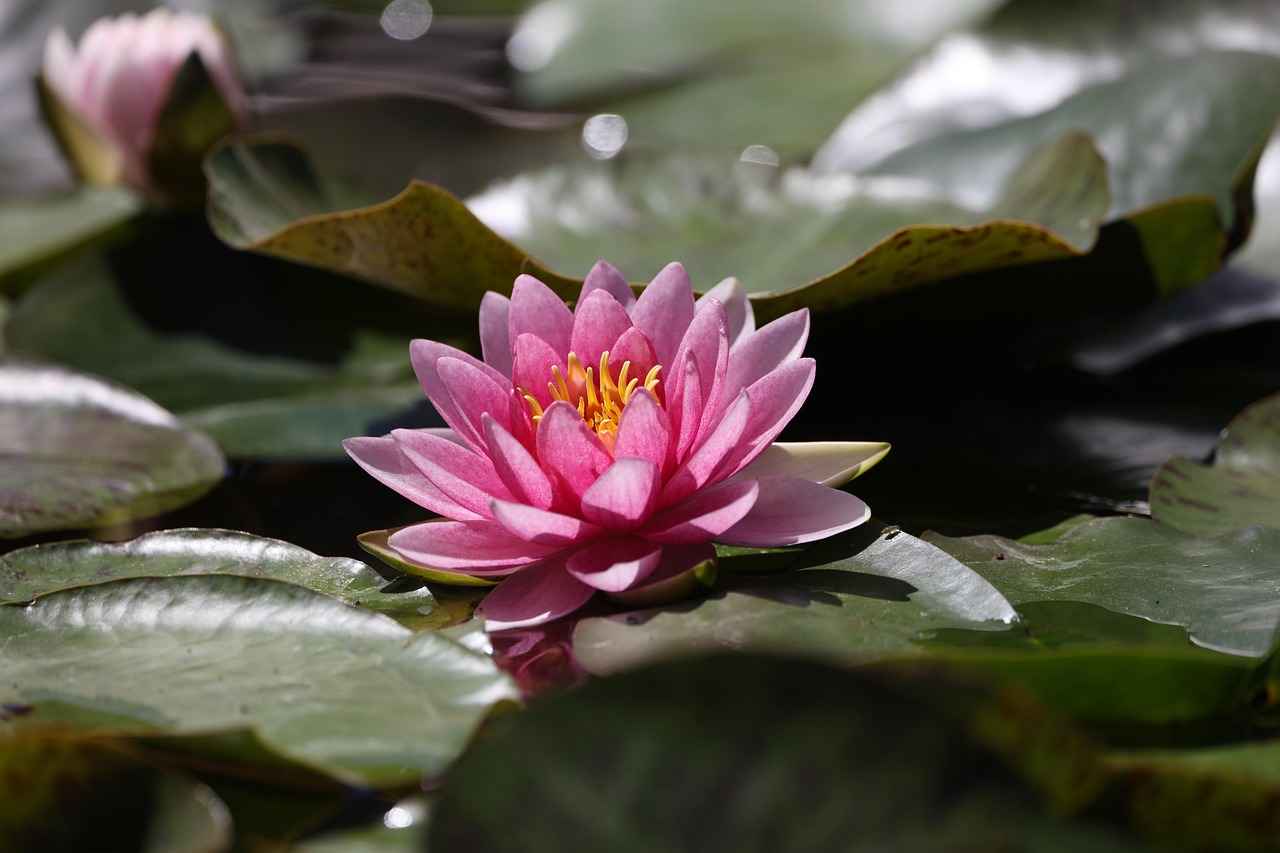
Practical Applications in Cooking
When it comes to cooking, the temperature of the water you use can have a profound impact on the outcome of your dishes. Understanding the practical applications of hot versus cold water is essential for both novice and experienced home cooks. This section delves into how the choice of water temperature can influence various cooking processes, particularly in boiling.
One of the most common cooking tasks is boiling pasta. Many cooks wonder whether starting with hot water or cold water makes a difference. The truth is, while starting with hot water may seem convenient, it can lead to uneven cooking. Here are some key points to consider:
- Hot Water: Using hot water can reduce the overall cooking time, but it can also lead to a rapid boil that may cause the pasta to stick together.
- Cold Water: Starting with cold water allows for a gradual increase in temperature, which can help the pasta cook more evenly and absorb water better.
The temperature of water is crucial when brewing beverages like tea and coffee. Different types of tea and coffee require specific temperatures for optimal flavor extraction:
- Green Tea: Best brewed at 160-180°F (70-80°C) to prevent bitterness.
- Coffee: Ideal brewing temperature ranges from 195-205°F (90-96°C) to extract the best flavors.
Using water that is too hot can scorch the leaves or grounds, resulting in a less flavorful drink.
When boiling vegetables, the temperature of the water can also affect nutrient retention and texture. Here’s how:
- Hot Water: Quickly boiling vegetables can help retain vibrant colors and nutrients, but overcooking can lead to mushiness.
- Cold Water: Starting with cold water can be beneficial for vegetables that require a longer cooking time, allowing them to cook evenly without losing their crunch.
When making soups or stocks, the choice of water temperature can influence the extraction of flavors:
- Hot Water: Using hot water can help dissolve fats and flavors quickly, leading to a richer broth.
- Cold Water: Starting with cold water allows for a slow extraction of flavors, which can enhance the overall taste of the soup.
Choosing between hot and cold water not only affects cooking times but also energy consumption:
- Energy Savings: Using cold water may require more time to reach boiling, but it can be more energy-efficient in certain situations.
- Cost-Effectiveness: Understanding the energy costs associated with heating water can help you make informed choices, potentially saving money on utility bills.
In summary, the temperature of the water you use in cooking has significant implications for the quality and efficiency of your meals. By understanding the practical applications of hot and cold water, you can enhance your cooking techniques and achieve better results in the kitchen.
Boiling Pasta: Hot vs. Cold Water
When it comes to cooking pasta, a common question arises: does it matter if you start with hot or cold water? The answer is not as straightforward as one might think, and understanding the science behind boiling water can significantly enhance your cooking experience.
The initial temperature of the water can influence the cooking process, but it is essential to consider several factors that contribute to the effectiveness of boiling pasta. Let’s delve into the details.
Starting with cold water may seem like a time-consuming choice, but it allows for a more gradual increase in temperature, which can lead to more even cooking. On the other hand, beginning with hot water can indeed reduce the time it takes to reach the boiling point. However, this method can also lead to uneven cooking if the pasta is added too soon.
Many home cooks believe that using hot water will always yield faster results. While this is true in terms of reaching the boiling point, it does not necessarily translate to better pasta. Cooking pasta in rapidly boiling water is crucial for ensuring that it cooks evenly and maintains the desired texture.
- Use Plenty of Water: Always use a large pot with plenty of water. This helps maintain the temperature when pasta is added.
- Salt the Water: Adding salt not only enhances flavor but also raises the boiling point slightly, which can improve cooking efficiency.
- Wait for a Rolling Boil: Ensure the water is at a rolling boil before adding pasta. This prevents the pasta from becoming sticky and clumping together.
- Stir Occasionally: Stirring helps to prevent the pasta from sticking to the pot or itself, ensuring even cooking.
Using hot water may seem like a convenient option, but it can have implications for energy consumption. Heating water from a cold state can be more energy-efficient in some cases, especially when using a lid to trap heat. Additionally, consider the type of stove you are using; gas stoves may heat water faster than electric ones.
There are several myths surrounding the cooking of pasta that can lead to confusion:
- Myth: Hot Water Always Boils Faster: While it reaches boiling quicker, the effectiveness of cooking pasta is more about maintaining a steady boil.
- Myth: Cold Water Takes Longer to Cook Pasta: If the water is brought to a boil before adding pasta, the difference in cooking time can be negligible.
In summary, while starting with hot or cold water can influence the boiling process, the key to effectively cooking pasta lies in maintaining a steady boil and following best practices. By understanding these principles, you can enhance your cooking skills and enjoy perfectly cooked pasta every time.
Making Tea and Coffee
When it comes to brewing tea and coffee, the temperature of water plays a crucial role in extracting flavors, aromas, and essential compounds from the leaves and beans. Understanding the optimal brewing temperatures can significantly enhance your beverage experience.
Different types of tea require different water temperatures for optimal flavor extraction. Here’s a quick guide:
- Green Tea: Best brewed at 160°F to 180°F (70°C to 80°C). This lower temperature helps preserve the delicate flavors and prevents bitterness.
- White Tea: Ideal at 160°F to 185°F (70°C to 85°C). Similar to green tea, white tea benefits from lower temperatures to maintain its subtle sweetness.
- Oolong Tea: Brew at 185°F to 205°F (85°C to 96°C). Oolong can handle higher temperatures, allowing for a fuller extraction of its complex flavors.
- Black Tea: Optimal at 200°F to 212°F (93°C to 100°C). Black tea requires near-boiling water to fully extract its rich, robust flavors.
- Herbal Tea: Brew at boiling point (212°F or 100°C). Herbal teas often need boiling water to extract their full range of flavors and health benefits.
Similar to tea, the temperature of water used in brewing coffee greatly influences the extraction process. Here are the recommended temperatures:
- Pour Over Coffee: Use water between 195°F and 205°F (90°C to 96°C). This range allows for balanced extraction, enhancing the coffee’s flavor profile.
- French Press: Ideal at 200°F (93°C). This temperature helps extract oils and flavors while minimizing bitterness.
- Cold Brew: Involves steeping coffee grounds in cold water (around 60°F to 70°F (15°C to 21°C)) for an extended period (12-24 hours). This method results in a smooth, less acidic coffee.
The temperature of water affects the solubility of various compounds in tea and coffee. For instance, higher temperatures can extract more caffeine and tannins, leading to a more bitter taste. Conversely, lower temperatures may not extract enough flavor, resulting in a weak brew. Understanding these dynamics allows you to tailor your brewing process to achieve your desired flavor profile.
To ensure you’re brewing your tea and coffee at the right temperature:
- Use a thermometer to measure water temperature accurately.
- For tea, consider using a kettle with temperature settings.
- For coffee, allow boiled water to cool for about 30 seconds before pouring over the grounds.
In summary, mastering the art of brewing tea and coffee involves understanding the impact of water temperature on flavor extraction. By adhering to recommended temperature ranges, you can significantly enhance your beverage experience, ensuring each cup is rich in flavor and aroma.
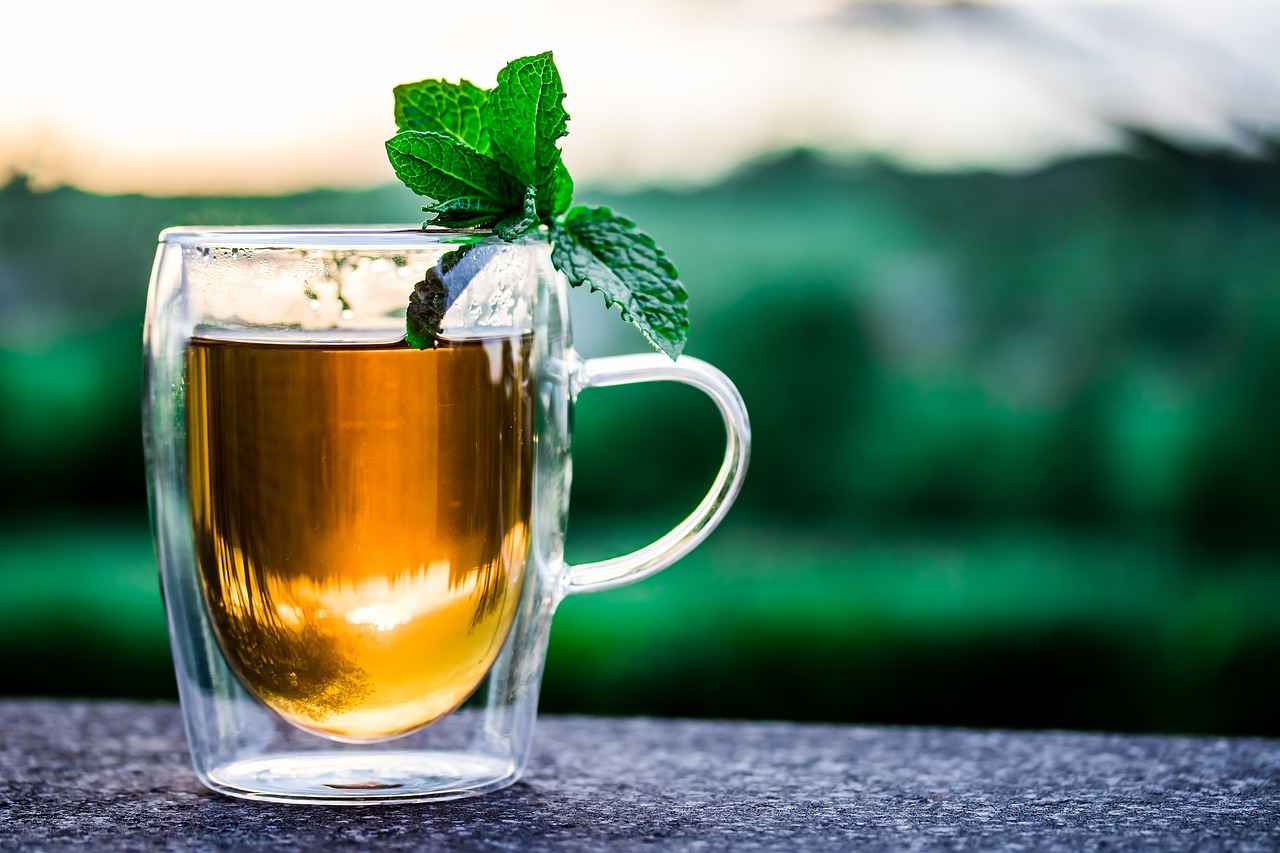
Energy Efficiency Considerations
When it comes to energy efficiency, the temperature of the water you use can significantly influence both your energy consumption and your overall utility costs. This section delves into the energy implications of boiling water at different temperatures, providing insights into how these choices can affect your household’s energy usage.
The energy required to heat water correlates directly with its starting temperature. When you begin with cold water, it takes more energy to reach the boiling point compared to starting with hot water. However, the difference in energy consumption may not be as straightforward as it seems. This is where understanding the cost analysis of heating water becomes crucial.
| Water Temperature (°C) | Energy Required (kWh) | Estimated Cost ($) |
|---|---|---|
| 20 (Cold) | 0.2 | 0.02 |
| 60 (Warm) | 0.1 | 0.01 |
| 80 (Hot) | 0.05 | 0.005 |
This table illustrates that while starting with hot water may seem to save time, it can also lead to increased energy costs. Understanding these dynamics allows for better decision-making regarding energy usage.
Using energy-efficient practices not only benefits your wallet but also helps in minimizing your environmental footprint. The less energy you consume, the lower your greenhouse gas emissions will be. By boiling only the amount of water you need and opting for lower starting temperatures when possible, you can contribute to sustainability efforts.
- Boil only what you need: Measure the exact amount of water required for your cooking or drinks.
- Use a lid: Covering your pot can trap heat and reduce cooking time.
- Consider an electric kettle: These devices are typically more energy-efficient than stovetops.
- Maintain your appliances: Regular maintenance can improve efficiency and reduce energy waste.
Many people believe that starting with hot water guarantees faster boiling, leading them to assume it’s the more efficient choice. However, this is a common myth. In reality, the time it takes to boil water depends on several factors, including the heat source and the pot’s material. Using a high-quality pot can enhance heat conduction and speed up the boiling process, regardless of the initial water temperature.
In summary, while using hot water may seem convenient, it’s essential to consider the energy implications of your choices. By understanding how temperature affects energy consumption, you can make informed decisions that benefit both your budget and the environment.
Cost Analysis of Heating Water
is a crucial aspect of understanding energy consumption in our daily lives. When considering the energy costs associated with boiling water, it’s essential to recognize that the starting temperature of the water plays a significant role in determining how much energy is required. This analysis will explore the implications of heating water from various initial temperatures, providing insights that can help consumers make informed choices.
When we heat water, the energy required is directly related to the temperature difference between the starting temperature and the boiling point, which is typically 100°C (212°F) at sea level. The formula to calculate the energy needed to raise the temperature of water is:
Energy (in Joules) mass (in kg) × specific heat capacity (4.186 J/g°C) × temperature change (in °C)
For example, if you start with cold water at 10°C and need to bring it to a boil, the temperature change is 90°C. Conversely, if you start with hot water at 60°C, the temperature change is only 40°C. This difference in temperature change leads to a significant difference in energy consumption.
| Starting Temperature (°C) | Temperature Change (°C) | Energy Required (Joules per kg) |
|---|---|---|
| 10 | 90 | 376.74 |
| 60 | 40 | 167.44 |
From the table, it’s clear that starting with cold water requires more energy compared to starting with hot water. This energy consumption translates to higher costs on your utility bill. Additionally, the cost of energy varies by location and provider, making it important to consider your specific circumstances.
Furthermore, the efficiency of your heating method also impacts the overall cost. For instance, electric kettles are generally more efficient than stovetops, as they directly heat the water without losing much energy to the surrounding air. Understanding these nuances can lead to better decisions regarding how you heat water, ultimately saving money and energy.
Another factor to consider is the time factor. While it may seem convenient to use hot water, the time saved might not justify the increased energy costs, especially for larger quantities of water. In practical cooking scenarios, such as boiling pasta or making tea, the difference in energy usage can accumulate over time, affecting your overall energy consumption.
In conclusion, understanding the cost of heating water is vital for making informed decisions about energy use in the kitchen and beyond. By considering the starting temperature of water, the efficiency of your heating method, and the specific energy costs in your area, you can optimize your practices for both economic and environmental benefits.
Environmental Impact
As we navigate the challenges of climate change and environmental degradation, adopting energy-efficient practices becomes increasingly vital. One area where we can make a significant impact is in our approach to boiling water. This section explores how efficient boiling methods can contribute to sustainability efforts and minimize our overall environmental footprint.
The process of boiling water consumes energy, and the amount of energy required can vary based on several factors, including the initial temperature of the water. When we use cold water, we rely on our heating appliances to raise the temperature from room temperature to the boiling point, which can be energy-intensive. Conversely, starting with hot water may seem like an efficient choice, but it’s crucial to consider the source of that hot water. If it comes from a traditional water heater that runs on fossil fuels, the environmental benefits may be negated.
- Use a Lid: Covering the pot while boiling water can significantly reduce energy consumption by trapping heat.
- Electric Kettles: These appliances are often more energy-efficient than boiling water on the stove, as they heat water more quickly.
- Induction Cooktops: If available, induction cooktops can boil water faster and use less energy compared to traditional gas or electric stoves.
Insulating your hot water pipes and storage tanks can also play a crucial role in energy efficiency. Proper insulation minimizes heat loss, ensuring that hot water remains hot longer, which means less energy is required to reheat it. This practice not only saves energy but also reduces the overall demand on heating systems, leading to lower greenhouse gas emissions.
In addition to energy efficiency, boiling water practices can contribute to water conservation. By boiling only the amount of water needed for cooking or beverages, we can reduce unnecessary water waste. This is especially important in areas facing water scarcity. Furthermore, using energy-efficient boiling methods can lead to a decrease in the carbon footprint associated with water heating.
To further enhance sustainability efforts, consider integrating the following practices into your daily routine:
- Choose Energy Star Appliances: Invest in appliances that meet energy efficiency guidelines to reduce energy consumption.
- Practice Batch Cooking: Boil larger quantities of water for multiple meals, which can save energy in the long run.
- Educate Others: Share knowledge about energy-efficient practices with friends and family to promote collective action towards sustainability.
In summary, adopting energy-efficient practices when boiling water not only minimizes environmental impact but also encourages a more sustainable lifestyle. By understanding the energy dynamics of boiling water and implementing best practices, we can contribute to a healthier planet for future generations.

Common Myths about Boiling Water
When it comes to boiling water, several misconceptions have taken root in popular understanding. Many people assume that the temperature of the water significantly influences how quickly it reaches its boiling point. This section aims to debunk some of these myths and provide a clearer understanding of the boiling process.
One of the most prevalent myths is that starting with hot water will always result in faster boiling. While it seems logical that water already at a higher temperature would reach boiling sooner, the reality is more complex. The time it takes for water to boil is primarily determined by the amount of heat energy applied and the volume of water. If you start with hot water, it may have a slight advantage, but the difference is often negligible. In many cases, the energy required to bring cold water to a boil can be offset by the efficiency of heating methods.
Another common belief is that cold water inevitably takes longer to boil than hot water. While it is true that cold water has to absorb more energy to reach its boiling point, the rate of heating can vary based on several factors, including the heat source and the container used. For instance, using a high-efficiency induction cooktop can significantly reduce the time it takes for cold water to boil, sometimes making it comparable to starting with hot water.
Many cooks add salt to water with the assumption that it will help it boil faster. While it’s true that adding salt can raise the boiling point of water, the amount of salt typically used in cooking is not enough to make a significant difference in boiling speed. In fact, the added solute can slightly slow down the boiling process due to the increased boiling point, though the effect is minimal in practical cooking scenarios.
Some people believe that covering a pot while boiling water is unnecessary. However, using a lid can significantly reduce the time it takes for water to boil. A lid traps heat and steam, allowing the temperature to rise more quickly. This is particularly important when boiling larger quantities of water, as it can lead to better energy efficiency and faster cooking times.
Another misconception is that water boils at the same temperature regardless of location. In reality, the boiling point of water is influenced by atmospheric pressure, which varies with altitude. At higher elevations, the lower atmospheric pressure means water boils at a lower temperature. This is a crucial factor for those who cook at high altitudes, as it requires adjustments in cooking times and methods.
Lastly, there is a belief that boiling water eliminates all impurities and makes it safe to drink. While boiling does kill many pathogens, it does not remove chemical contaminants, heavy metals, or other harmful substances. For safe drinking water, additional purification methods may be necessary, such as filtration or distillation.
In summary, understanding the science behind boiling water can help dispel these common myths. By recognizing the true factors that influence boiling speed and efficiency, home cooks can make better decisions in the kitchen, leading to improved cooking outcomes and energy savings.
Myth: Hot Water Boils Faster
Many people assume that starting with hot water will lead to a quicker boil compared to using cold water. This belief is widespread and often taken for granted in everyday cooking. However, the reality is more nuanced and requires a deeper understanding of the science behind boiling.
To grasp why this myth persists, it’s essential to consider the boiling process. When water is heated, its molecules gain energy and begin to move more rapidly. This movement is what leads to boiling, where water transitions from a liquid to a gas. However, the initial temperature of the water is just one factor in this complex process.
One critical aspect to consider is the specific heat capacity of water, which is the amount of energy required to raise the temperature of a given quantity of water. Cold water, although initially at a lower temperature, can reach the boiling point more efficiently when heated in an appropriate environment. For instance, if cold water is heated in a pot with a high thermal conductivity, it can absorb heat quickly and reach its boiling point without significant delays.
Furthermore, the energy source plays a vital role. If you are using a gas stove, the flame may heat the pot more uniformly when starting with cold water. In contrast, starting with hot water can lead to uneven heating, as the lower temperature of the pot can absorb heat from the hot water, potentially slowing the overall heating process.
Additionally, the surface area of the pot and the volume of water being boiled are crucial factors. A larger surface area allows for faster heat transfer, which can compensate for the initial temperature of the water. Therefore, boiling a smaller amount of cold water in a wide pot may actually result in a faster boil than starting with hot water in a narrow pot.
Another point to consider is the presence of impurities in the water. Tap water often contains minerals and other substances that can affect its boiling point. If hot water contains more impurities than cold water, it may take longer to reach boiling due to the increased boiling point caused by these solutes.
In practical cooking scenarios, the choice between hot and cold water can also depend on what you are trying to achieve. For example, when boiling pasta, starting with cold water allows the pasta to cook evenly as the water heats up, preventing it from becoming mushy on the outside while still hard on the inside. In contrast, starting with hot water can lead to uneven cooking, especially for thicker pasta shapes.
In summary, while it is a common belief that hot water boils faster, the reality is that various factors influence the boiling speed. Understanding the science behind boiling water can help you make informed decisions in the kitchen. By considering the specific heat capacity, energy source, surface area, and impurities, you can optimize your cooking practices and achieve better results.
Ultimately, the myth that hot water always boils faster is a simplification of a more complex process. Armed with this knowledge, you can approach your cooking with a more scientific perspective, ensuring you get the best results every time.
Myth: Cold Water Takes Longer to Boil
The common belief that cold water always takes longer to boil than hot water is a widely held myth that deserves closer examination. While it might seem intuitive that starting with a hotter temperature would lead to a quicker boil, the reality is influenced by several scientific factors that can alter this expectation.
To understand the dynamics of boiling, we must first consider the boiling point. This is the temperature at which water transitions from a liquid to a gas. Under standard atmospheric pressure, pure water boils at 100°C (212°F). However, this boiling point can vary based on several factors, including atmospheric pressure and the presence of impurities.
- Atmospheric Pressure: At higher altitudes, the pressure is lower, which reduces the boiling point of water. This means that water can reach its boiling point faster in high-altitude locations, regardless of its starting temperature.
- Impurities: The presence of minerals or other solutes in water can also affect its boiling point. For example, adding salt raises the boiling point, while impurities can sometimes lower it.
Another aspect to consider is the heat transfer efficiency. When heating water, the rate at which it absorbs heat is crucial. Cold water may initially seem to take longer to reach boiling, but if you use a pot with a larger surface area or a more efficient heat source, it can boil just as quickly as hot water. Additionally, the energy required to raise the temperature of cold water may be offset by the efficiency of the heating method used.
Furthermore, the specific heat capacity of water plays a role in this equation. Water has a high specific heat capacity, meaning it requires a significant amount of energy to change its temperature. When starting with cold water, although it may take longer to reach boiling initially, the difference in time may not be as significant as commonly believed.
In practical terms, when cooking, the difference in boiling times between cold and hot water can be negligible, depending on the method used. For instance, when boiling pasta, many chefs recommend starting with cold water to ensure even cooking and to avoid the pasta sticking together. This approach highlights that the initial temperature of water is not the only factor to consider when aiming for optimal cooking results.
In conclusion, while the notion that cold water takes longer to boil has been ingrained in popular culture, scientific evidence suggests that this is not always the case. Factors such as atmospheric pressure, impurities, and heat transfer efficiency play significant roles in determining boiling times. Therefore, it is essential to approach cooking and boiling water with a nuanced understanding of these dynamics to improve both efficiency and culinary outcomes.
Frequently Asked Questions
- Does hot water really boil faster than cold water?
It’s a common belief that hot water boils faster, but the truth is a bit more complex. While it may seem logical, the initial temperature isn’t the only factor. The rate at which water reaches its boiling point is influenced by various elements, including the heat source and the container used.
- What factors affect the boiling point of water?
The boiling point of water can be influenced by several factors, including altitude and the presence of impurities. At higher altitudes, for instance, the atmospheric pressure is lower, which means water boils at a lower temperature. Additionally, adding substances like salt can alter the boiling point, making it higher or lower depending on the concentration.
- Is it more energy-efficient to boil cold water?
While it might seem like starting with hot water would save energy, it’s often more efficient to start with cold water. Heating water from a cooler temperature can sometimes lead to lower overall energy consumption, especially if you consider the energy used to heat water initially.
- Can I use cold water for cooking pasta?
Yes, you can use cold water to cook pasta, but it may take longer to reach the boiling point. Starting with hot water can speed up the process, but it’s crucial to consider the best practices for cooking pasta to ensure it cooks evenly and thoroughly.
